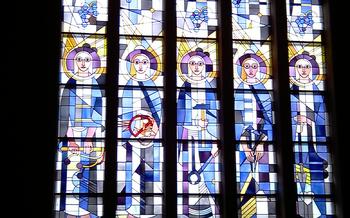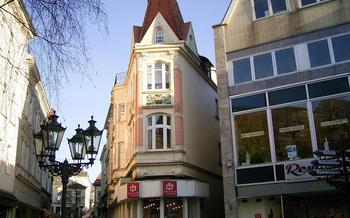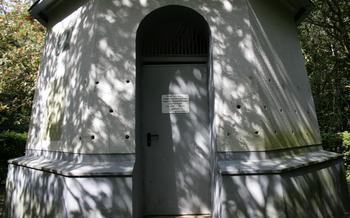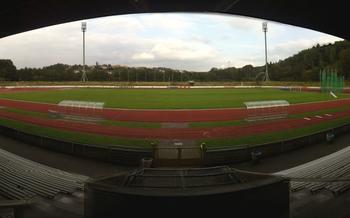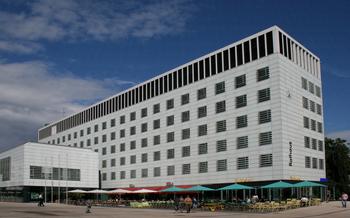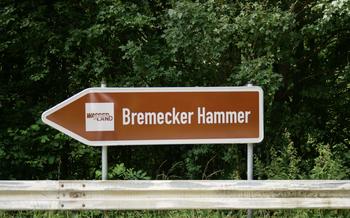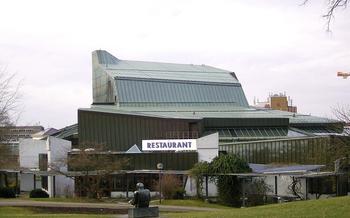
Kluterthöhle
- The Kluterthöhle: A Unique Cave Experience
- Exploring the Cave's Chambers
- The Dripstone Formations
- The Underground River
- The Cave Fauna
- Guided Tours and Accessibility
- Paleontological Discoveries
- The Cave's Cultural History
- The Kluterthöhle Museum: Unveiling the Cave's Secrets
- Surrounding Attractions
- Local Cuisine and Dining
- Accommodation Options
- Outdoor Activities and Hiking Trails
- Insider Tip: Off-the-Beaten-Path Explorations
The Kluterthöhle: A Unique Cave Experience
History and Geological Significance
The Kluterthöhle, located in the scenic Sauerland region of Germany, is a remarkable natural wonder that has captivated visitors for centuries. Formed over millions of years by the erosive power of underground water, this awe-inspiring cave system boasts a rich geological history. The cave's intricate chambers and passageways were carved out of massive limestone deposits, creating a subterranean labyrinth that has remained largely untouched by human intervention.
Unique Features and Formations
The Kluterthöhle is renowned for its exceptional and diverse geological formations. Stalactites and stalagmites, formed by the slow dripping of mineral-rich water over eons, create an otherworldly landscape within the cave. These delicate and intricate structures, illuminated by soft lighting, cast an ethereal glow that adds to the cave's magical ambiance. In addition to these classic cave formations, visitors can marvel at rare and unique features such as cave pearls, flowstones, and helictites, each telling a story of the cave's dynamic geological processes.
Importance as a Natural Heritage Site
The Kluterthöhle is recognized as a significant natural heritage site, both regionally and nationally. Its unique geological formations, pristine condition, and rich biodiversity make it an invaluable asset to the region's natural and cultural heritage. The cave's conservation status ensures its protection for future generations, allowing visitors to continue to explore and appreciate its wonders while respecting its delicate ecosystem.
Exploring the Cave's Chambers
The Kluterthöhle is a labyrinth of interconnected chambers, each with its own unique features and formations. The Große Halle (Great Hall) is the largest chamber, boasting a towering ceiling and impressive stalactites and stalagmites. The Kristallkammer (Crystal Chamber) is adorned with sparkling calcite crystals, while the Tropfsteinsaal (Dripstone Hall) showcases a variety of dripstone formations, including delicate soda straws and massive flowstones.
One of the most fascinating chambers is the Eishöhle (Ice Cave), where ice formations persist even in the summer months. The Wunderkammer (Chamber of Wonders) is known for its unusual rock formations, including a stalagmite resembling a human skull.
As you explore the cave, you'll be amazed by the sheer variety and beauty of the formations. Be sure to bring a flashlight or headlamp to illuminate the darker corners and reveal the hidden wonders of the Kluterthöhle.
The Dripstone Formations
The Kluterthöhle is renowned for its stunning dripstone formations, which have been shaped over millions of years by the slow and continuous dripping of water. These formations take on various shapes and sizes, creating a mesmerizing spectacle for visitors.
Stalagmites, which rise from the cave floor, and stalactites, which hang from the ceiling, are the most common types of dripstone formations found in the cave. They often merge to form columns, creating a majestic display of natural architecture.
The dripstone formations in the Kluterthöhle come in a variety of colors, ranging from white to yellow and even reddish-brown. These colors are a result of the minerals present in the water that seeps through the cave's limestone walls.
The formations are not only visually captivating but also scientifically significant. They provide valuable insights into the cave's geological history, including the rate of water flow, the temperature, and the chemical composition of the water over time.
By studying the dripstone formations, scientists can determine the age of different parts of the cave and reconstruct the paleoenvironmental conditions that existed during their formation. These formations serve as a valuable record of the cave's evolution and the geological processes that have shaped it over time.
The Underground River
In the depths of the Kluterthöhle, a concealed river, a clandestine lifeblood, courses through the cave's heart, an enduring testament to the relentless forces that crafted this subterranean masterpiece. This subterranean river, a symphony of water's persistence, has diligently sculpted the cave's features, leaving behind an imprint of its ceaseless journey.
The river's murmur, a whisper echoing through the caverns, serves as a reminder of nature's ceaseless metamorphosis. As it meanders through the labyrinthine passages, its crystal-clear waters reflect the cave's intricate tapestry, revealing hidden depths and casting an ethereal glow upon the stalactites and stalagmites that adorn its banks.
Legends whisper of the river's mystical powers, tales of hidden chambers and long-forgotten treasures concealed within its depths. Whether these tales hold truth or not, the river remains an enigma, an alluring mystery that beckons adventurers and explorers alike to unravel its secrets.
The Cave Fauna
The Kluterthöhle is home to a unique and diverse array of cave-dwelling creatures, adapted to survive in the darkness and humidity of the subterranean environment. Among these remarkable inhabitants are blind cave beetles, with their elongated antennae and reduced eyes, allowing them to navigate the cave's intricate passages. Springtails, tiny insects that thrive in the damp conditions, scurry across the cave's walls, feeding on fungi and decaying organic matter.
One of the most fascinating creatures found in the cave is the cave spider, with its long, slender legs and delicate web spun across the cave's chambers. These spiders prey on other cave-dwelling insects, contributing to the delicate balance of the cave's ecosystem.
Conservation efforts are underway to protect the fragile ecosystem of the Kluterthöhle. Limiting human impact, monitoring cave fauna populations, and implementing sustainable tourism practices are essential in preserving this unique subterranean world for future generations.
Guided Tours and Accessibility
To fully appreciate the wonders of the Kluterthöhle, guided tours are highly recommended. Knowledgeable guides lead visitors through the cave's chambers, providing fascinating insights into its history, geology, and unique formations. Tours are available in multiple languages, ensuring that visitors from all over the world can enjoy the experience.
The cave is wheelchair accessible, allowing visitors with disabilities to explore its wonders. Special ramps and platforms have been installed to ensure that everyone can navigate the cave safely and comfortably. Visitors with visual impairments can also enjoy the cave through tactile tours, where they can explore the formations using their sense of touch.
Paleontological Discoveries
The Kluterthöhle has yielded a wealth of paleontological discoveries, providing valuable insights into prehistoric life. Excavations conducted in the cave have uncovered fossilized remains of various animal species that once inhabited the region. Among the most significant finds are the bones of cave bears, which were once abundant in the area. These discoveries have shed light on the evolutionary history and behavior of these extinct animals.
Additionally, the cave has yielded fossils of other mammals, such as hyenas, wolves, and reindeer, offering a glimpse into the diverse fauna that roamed the region during the Ice Age. These discoveries have helped paleontologists reconstruct the ancient ecosystem and understand the environmental changes that have occurred over time.
For visitors interested in paleontology, the Kluterthöhle Museum showcases a collection of these fascinating fossils. The exhibits provide detailed information about the discoveries made in the cave and their significance in understanding prehistoric life. Guided tours often include a visit to the museum, where visitors can learn more about the cave's paleontological treasures.
The Cave's Cultural History
The Kluterthöhle has a rich cultural history, dating back to prehistoric times. Archaeological evidence suggests that the cave was inhabited by humans as early as the Stone Age. Artifacts such as tools, pottery, and jewelry have been found in the cave, indicating that it was once a place of human settlement. In the Middle Ages, the cave was used as a hiding place by robbers and outlaws. There are even legends that claim that the cave was once used as a secret meeting place for witches and sorcerers. Today, the cave is a popular tourist destination, and visitors can learn about its fascinating history through guided tours and exhibits.
The Kluterthöhle Museum: Unveiling the Cave's Secrets
Nestled amidst the scenic landscapes of Lüdenscheid, the Kluterthöhle Museum stands as a treasure trove of knowledge and insights into the cave's rich history and geological wonders. Step inside this captivating museum, and embark on a journey through time, discovering the secrets that lie beneath the earth's surface.
The museum's exhibits are a testament to the cave's significance, showcasing an array of artifacts, fossils, and interactive displays that bring the cave's story to life. Learn about the formation of the cave, its unique geological features, and the fascinating discoveries made within its chambers.
One of the highlights of the museum is the paleontological exhibit, which showcases fossils of prehistoric animals that once roamed the region. These fossils provide a glimpse into the ancient past, offering valuable insights into the evolution of life on Earth.
The museum also delves into the cultural history of the cave, revealing evidence of human habitation dating back to prehistoric times. Discover the fascinating stories of the people who sought refuge or shelter within the cave's depths, leaving behind traces of their presence in the form of tools, pottery, and other artifacts.
A visit to the Kluterthöhle Museum is an enriching experience that complements the exploration of the cave itself. Whether you're a history buff, a nature enthusiast, or simply curious about the wonders of the underworld, this museum offers a wealth of knowledge and inspiration.
Surrounding Attractions
After delving into the subterranean wonders of the Kluterthöhle, take some time to explore the alluring attractions that dot the surrounding region. Lüdenscheid, the city where the cave resides, offers a tapestry of historical and cultural experiences. Delve into the city's past at the Lüdenscheid Museum, where exhibits showcase the region's rich industrial heritage and fascinating local history.
Venture beyond Lüdenscheid to discover the enchanting town of Altena, a mere 20-minute drive away. Perched atop a hill, Altena boasts a picturesque castle that has stood guard since the 12th century. Explore its grand halls and immerse yourself in tales of chivalry and medieval life.
Nature enthusiasts will delight in exploring the nearby Ebbegebirge Nature Park, a haven of tranquility just a short drive from the cave. Lace up your hiking boots and embark on a journey through verdant forests, past sparkling streams, and atop scenic hilltops. The park offers a variety of trails catering to all fitness levels, promising a rejuvenating escape into the heart of nature.
Local Cuisine and Dining
When visiting the Kluterthöhle, don't miss the opportunity to sample the local cuisine. Lüdenscheid and the surrounding region offer a range of dining options, from traditional German restaurants to cozy cafes. Indulge in hearty dishes like "Sauerbraten" (marinated roast beef) with potato dumplings and red cabbage, or try "Reibekuchen" (potato pancakes) with apple sauce. For a taste of the region's brewing tradition, visit one of the local breweries and sample their freshly brewed beers. Vegetarian and vegan options are also available, ensuring that everyone can enjoy the local flavors.
Accommodation Options
When planning your visit to the Kluterthöhle, you'll want to consider your accommodation options. Lüdenscheid offers a range of choices to suit different budgets and preferences. From cozy guesthouses to comfortable hotels, there's something for every traveler.
For those seeking a budget-friendly option, the Lüdenscheid Youth Hostel is a popular choice. Located just a short distance from the cave, it offers basic but clean and comfortable accommodations. If you prefer a more private experience, numerous guesthouses and bed and breakfasts provide a more personalized touch.
For those seeking a more luxurious experience, the Mercure Hotel Lüdenscheid is a great choice. Located in the heart of the city, it offers modern and stylish rooms, as well as amenities such as a spa, sauna, and fitness center.
No matter your budget or preferences, you're sure to find the perfect place to stay in Lüdenscheid. To ensure availability, especially during peak tourist season, it's advisable to book your accommodation in advance.
Outdoor Activities and Hiking Trails
For those seeking adventure beyond the cave's depths, Lüdenscheid offers a diverse range of hiking trails and outdoor activities to immerse themselves in the region's natural beauty. The nearby Sauerland region is a hiker's paradise, boasting well-marked trails that wind through picturesque landscapes, dense forests, and charming villages.
One recommended trail is the "LenneSchiene" hiking trail, which follows the scenic Lenne River and offers breathtaking views of the surrounding countryside. The trail is divided into several stages, allowing hikers to customize their experience based on their fitness level and time constraints. Along the way, hikers can explore medieval castles, visit historic towns, and encounter diverse wildlife.
For a more challenging hike, the "Rothaarsteig" trail is a must-do. This long-distance trail traverses the crest of the Rothaar Mountains, providing panoramic vistas and passing through ancient beech forests. Hikers can choose to tackle the entire trail, which spans over 150 kilometers, or opt for shorter sections to suit their preferences.
Mountain biking enthusiasts will find plenty of adrenaline-pumping trails in the region. The "Bike Arena Sauerland" offers a network of well-maintained trails catering to all skill levels, from leisurely rides to technical downhill tracks. Bikers can explore forests, climb hills, and enjoy the thrill of riding through the varied terrain.
Nature lovers can also embark on a leisurely stroll through the "Lüdenscheid Stadtpark", a beautifully landscaped park located in the heart of the city. With its tranquil ponds, colorful flowerbeds, and shady trees, the park offers a peaceful retreat from the urban hustle and bustle.
Insider Tip: Off-the-Beaten-Path Explorations
While the Kluterthöhle is a must-see attraction, the surrounding region offers a treasure trove of hidden gems waiting to be discovered. For an off-the-beaten-path adventure, consider exploring the numerous smaller caves in the vicinity. These lesser-known caves often boast unique formations and a more intimate experience, free from the crowds. Ask locals for recommendations or do some research online to find these hidden gems.
For a truly unique experience, venture into the Attendornhöhle, located just a short drive from Lüdenscheid. This cave is home to a colony of thousands of bats, creating a mesmerizing spectacle during their evening flights. While the cave is closed to the public, special guided tours are occasionally offered, allowing visitors to witness this natural wonder up close.
If you're up for a challenge, embark on the "Karstwanderweg," a scenic hiking trail that takes you through the heart of the karst landscape, passing by numerous caves and rock formations. Along the way, you'll encounter breathtaking views, tranquil forests, and the chance to spot rare flora and fauna. Remember to wear appropriate hiking gear and bring plenty of water for this adventure.
